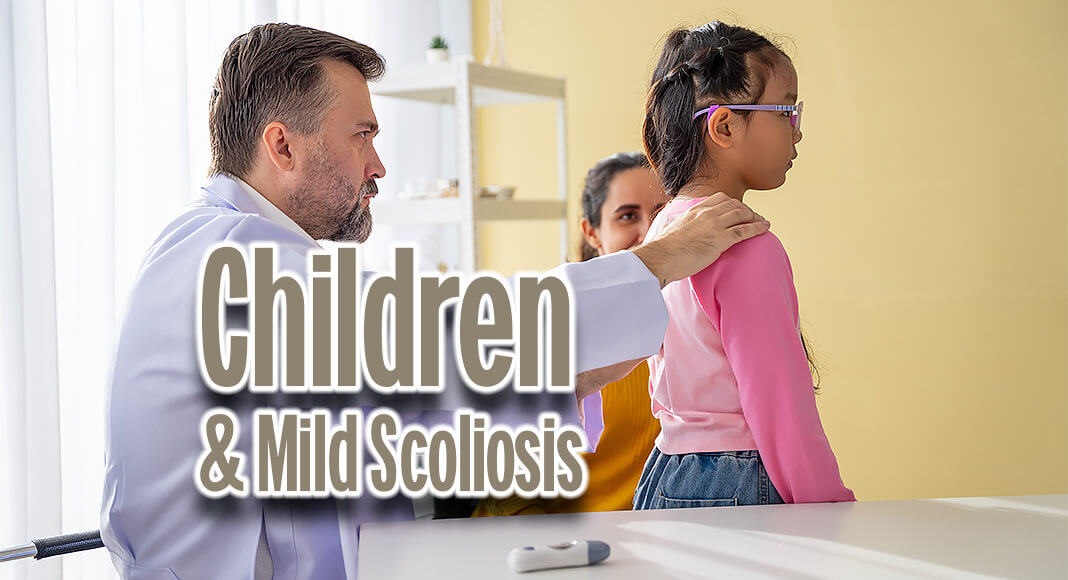
Texas Border Business
By Cynthia Weiss / Mayo Clinic
DEAR MAYO CLINIC: My 10-year-old daughter was just diagnosed with scoliosis. The curve is 19 degrees, and I have read that it could worsen with time. Will she need to wear a brace? Or is surgery indicated?
ANSWER: It sounds like your daughter’s case of scoliosis is mild and may not need treatment. But you are correct that scoliosis can progress over time. If it does, your daughter may need to wear a brace to prevent the curve from worsening.
Scoliosis is an abnormal sideways curvature of the spine. Most people have a spine that is relatively straight. Generally, a spine with a 10-degree curve or less is considered normal. A curve greater than 10 degrees is defined as scoliosis.
The goal of scoliosis treatment is to keep the curve from getting worse. Treatment options depend in large part on the curve’s severity. Curves between 10 and 25 degrees — where your daughter’s case fits — are in the mild range. The moderate range is between 25 and 50 degrees, and greater than 50 degrees is severe.
Other factors to consider when deciding on scoliosis treatment include a child’s gender — girls have a much higher risk than boys of the curve getting worse, as well as the location and pattern of the spinal curve.
For children who have early detection of scoliosis, treatment with bracing is always the first choice. Typically, braces can be prescribed to treat mild or moderate curves by holding the spine in a corrected position while the spine grows.
A scoliosis brace is made of plastic and contoured to conform to the body. It is a close-fitting brace and goes unnoticed under most clothing, as it fits under the arms and around the rib cage, lower back and hips.
Braces work by pushing on the muscles and bones attached to the spine. This holds the spine in place, preventing it from curving more and typically straightening the alignment of a curved spine. Physical therapy can help with pain control and improved posture.
Because a brace’s effectiveness increases with the number of hours it is worn, most children wear their braces day and night. But one caveat about braces: they only work to treat scoliosis in children who are still growing. For most kids, brace treatment typically is no longer an option after age 16. But once a child stops growing, it also is unlikely that a spinal curve will progress any further.
There are now several motion-sparing surgical treatment options for patients with moderate to severe scoliosis to help preserve spinal flexibility and growth. These include:

- Vertebral body tethering.
The spine is accessed through small incisions in the side, and a special camera is used during surgery. Metal screws are placed in the vertebrae where the spine is curved, and a plastic cord connects these screws. The cord is tensioned to shorten the long side of the scoliosis curve, acting as an internal brace. As children continue to grow, the curve may correct over time. The cord is flexible so the spine still can move, and the spine can continue to grow. Patients can return to all sports in six weeks. - Posterior dynamic distraction.
An incision is made over the back. Three screws are placed and connected with a single rod with two ball-bearing joints to allow motion and growth.
Severe scoliosis almost always can benefit from surgical treatment. The most common type of scoliosis surgery is spinal fusion, which involves connecting two or more of the bones in the spine together so they can’t move independently. After fusion, the spine no longer grows over the area where the spine is fused, and the spine does not move over the fused area. In most cases, the unfused spine area can compensate, and children can perform most daily activities and return to most sports in three to six months.

Talk to your daughter’s healthcare team about her diagnosis and the risk of the spinal curve worsening. Many children with mild curves, such as your daughter, do not need a brace or surgery. Instead, focus on correct posture and regular follow-up appointments with her healthcare professional about every six months to check for any evidence that the curve may be worsening.
If, at some point, her curve grows and crosses the line from mild to moderate severity at about 25 degrees, then treatment, such as a brace, may be necessary. It may be worthwhile to consult with a pediatric orthopedic surgeon to understand what may be necessary in the future.
Also, talk to your daughter about how she’s feeling. Coping with scoliosis can be difficult for pre-teens and teens. Support and encouragement from family and friends can help. — Dr. A. Noelle Larson and Dr. Anthony Stans, Orthopedic Surgery, Mayo Clinic, Rochester, Minnesota
Information Source – Mayo Clinic











